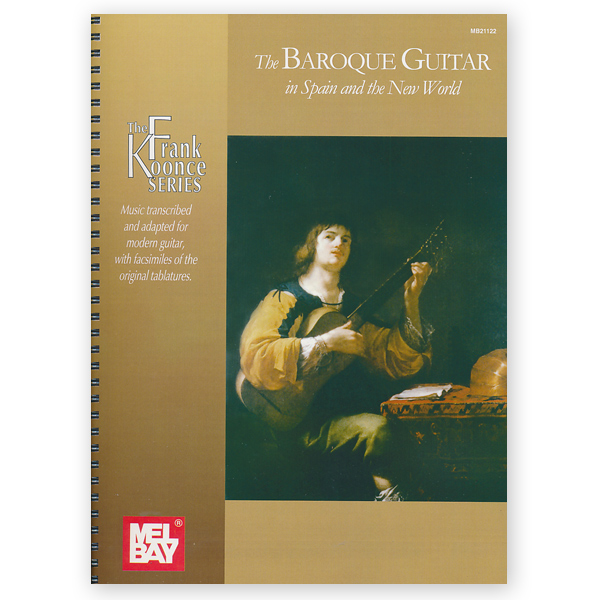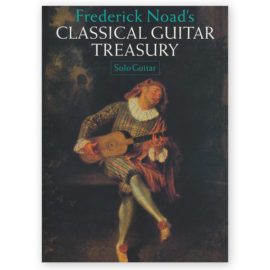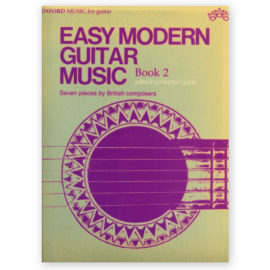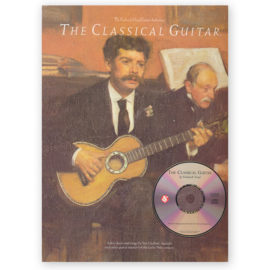Description
A substantial amount of early music for the guitar remains unknown to modern performers and audiences. In recent years, however, musicologists, scholars and performers on period instruments have provided a wealth of accessible new source materials which players can now begin to interpret in convincing and effective ways. Nevertheless, many still feel intimidated by the prospect of sorting through and learning to use these resources for the first time. For the uninitiated, just knowing where to start can be difficult.
This anthology contains representative selections from the publications and manuscripts of four important Spanish Baroque guitarists: Gaspar Sanz, Antonio de Santa Cruz, Francisco Guerau, and Santiago de Murcia. In addition to being fun and entertaining music for all to enjoy, this collection is intended to help bridge the gap between scholarly editions and performance editions by providing a hands-on introduction to tablature transcription and to issues concerning historically informed performance on the modern guitar.
176 pages
1. Evolution of the Five-Course Guitar
1.1. Transition from the Vihuela and Four-Course Guitar
1.2. Dominance of the Five-Course Guitar2. Tuning of the Five-Course Guitar
2.1. Terms Pertaining to Stringing and Tuning
2.2. Different Tunings for the Baroque Guitar
2.3. Issues and Opinions on Tuning Practices in Spain
2.4. Relevance of Baroque Tuning Practices to Modern Performers 3. Reading Baroque Guitar Tablature
3.1. Tablature and Transcription
3.2. Punteado Notation
3.3. Rasgueado Notation
3.4. Mixed Tablatures 4. Interpretation and Performance
4.1. Octave Selection and Voice Leading
4.2. Punteado Ornaments
4.3. Campanelas
4.4. Meter and Tempo
4.5. Hemiola and Syncopation
4.6. Rasgueado Techniques
4.7. Rasgueado Ornaments 5. Editorial Procedures
5.1. Philosophy and Intent
5.2. The Voicing and Notation of Strummed Chords
5.3. Editorial Notation 6. Gaspar Sanz
6.1–9. La cavalleria de Napoles con dos clarines, Rujero, Paradetas, Folias, Las Hachas, Zarabanda, La Esfachata de Napoles,La Minona de Cataluna, Canarios
6.10–14. Pavanas, Espanoletas, Matachín, Villanos, Passacalles 7. Antonio de Santa Cruz
7.1–3. Jacaras, Villano, Canario
8. Francisco Guerau
8.1–4. Marionas, Villano, Canario, Passacalles in B minor
9. Santiago de Murcia
9.1. Resumen de acompanar
La Guastala, Menuet, Preludio in D minor
9.2. Codice Saldívar No. 4
Marionas, Fandango, Jacaras, Zangarilleja, Cumbees
9.3. Passacalles y obras
Passacalles in G minor, Suite in G Major, Suite in D minor10. Facsimiles
Selected Bibliography
Music
Gaspar Sanz
La cavalleria de Napoles con dos clarines
Rujero
Paradetas
Folias
Las Hachas
Zarabanda
La Esfachata de Napoles
La Minona de Cataluna
Canarios
Pavanas
Espanoletas
Matachin
Villanos
Passacalles Antonio de Santa Cruz
Jacaras
Villano
Canario Francisco Guerau
Marionas
Villano
Canario
Passacalles in B minor Santiago de Murcia
La Guastala
Menuet(s)
Preludio in D minor
Marionas
Fandango
Jacaras
Zangarilleja
Cumbees
Passacalles in G minor
Suite in G Major
Suite in D minor Facsimile Reproductions
Gaspar Sanz
Instruccion de musica
Antonio de Santa Cruz
Libro donde se veran pazacalles
Francisco Guerau
Poema harmonico
Santiago de Murcia
Resumen de acompanar
Codice Saldívar No. 4
Passacalles y obras





